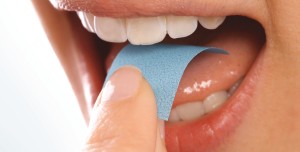
My popular post on oral Minoxidil for hair loss is updated regularly and I even use that medication for my own hair loss. One of the main proponents of low-dose oral Minoxidil (LDOM) is Dr. Rodney Sinclair of Australia. He is a world renowned dermatologist and hair loss specialist. In 2019, he released a product called “The Hairy Pill” that contains LDOM, Finasteride or Dutasteride, vitamins and amino acids.
I originally wrote this post in 2020, and have added some new updates throughout.
- A great Hairy Pill testimonial from 2023 on Reddit that shows excellent before and after 6-month results. The crown hair regrowth on this 31-year old male is exceptional.
- A local Australian news story from 2023 with before and after photos from a guy who had Norwood 7 hair loss. He recovered most of his hair other than part of the frontal hairline.
The Hairy Pill®
In 2019, a company associated with Dr. Sinclair released something called The Hairy Pill (registered trademark). While the company website does not seem to mention oral Minoxidil, the pill does contain Minoxidil as the key ingredient. Some online discussions suggest it also contains Finasteride, but I am not as yet certain. Update: Now verified per company response at the bottom of this post.
The Hairy Pill results page has many before and after photos, of both men and women. Also make sure to visit their Instagram page and their Facebook page.
The reason I decided to write about this pill today is due to the following Australian video that was just released:
Ratings
- So far, the Google reviews and ratings for The Hairy Pill are a perfect 5/5 stars. Even after accounting for fake reviews, it is rare to see Google reviews averaging 5 stars. I am sure this rating will decline going forward. Update: I no longer see the below on Google.

- On the company’s own site, there are currently 147 reviews averaging 4.6/5 stars. Accuracy is vouched for by Trustpilot.
The Hairy Pill Cost and Side Effects
The monthly cost of 30 Hairy Pill capsules tablets is AU $75 for both males and females. You supposedly get personalized dosing and doctor consultations every 3 months, 6 months, 12 months and beyond. Sounds very professional, even though I would prefer them declaring the ingredients with full transparency.
It does not seem like anyone is reporting serious side effects so far, based on all the customer reviews that I read. According to the company itself:
“The underlying technology of The Hairy Pill® has been clinically tested by Professor Sinclair and his team via his clinical research company Samson Clinical.”
Note that I do not get any kind of commission from this product, and have not tried it myself. I assume that “The Hairy Pill” is available for shipping worldwide, but need to get confirmation.
Update from the Manufacturer
The manufacturer sent me the following e-mail summarizing their product:
The Hairy Pill® for men is a pharmaceutical compound in one single pill, which you would take daily, containing:
- A starting dose of Minoxidil (low if the patient has never had oral Minoxidil before or a converted dose if the patient is taking topical Minoxidil) to stimulate hair growth, reduce thinning/loss and increase and thicken your hair.
- A starting dose of Finasteride (low if the patient has never had it before or matching if the patient is currently taking Finasteride); OR Dutasteride (depending on the patient and severity of hair loss) to stop your hair loss in its tracks.
- A collection of vitamins to promote healthy hair. Your hair is alive, so the healthier you are, the better your hair will be.
- A collection of elements for regenerative purposes. These elements assist in strengthening and improving your hair as it grows.
- A collection of amino acids (proteins) to provide the building blocks for the above active ingredients. These proteins assist in the building of your hair follicles.
Please note that since the pill is compounded each time, the doctor can add or exclude ingredients as needed. Some patients choose to have both active ingredients in the pill (Finasteride OR Dutasteride + Minoxidil combination), and some choose to have the one active ingredient (Minoxidil). Either option provides an effective treatment.
The women’s version also includes Spironolactone.


